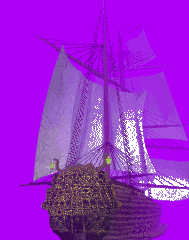Old Treasures and Shipwreck News - Spanish Galleon Nuestra Senora de Atocha
The Legend of the Atocha
By GovMint
The Spanish galleon Nuestra Senora de Atocha was named after Our Lady of Atocha, one of Spain’s most revered religious shrines. Though the name was thought to be a harbinger of good luck, it bore the Atocha little of it. The Atocha was one of the richest galleons of the Spanish fleet that set sail from Havana for Spain in 1622.
In addition to bales of tobacco and indigo, she was loaded with 20 bronze cannons, 30,000 pounds of copper, 500 pounds of gold and 35 tons of silver a cargo that by today’s standards would be in excess of $400 million.
On September 23, 1622, the Atocha was one of seven ships lost in a tremendous storm off the Florida Keys. Of the 265 people aboard, only three crewmen and two slaves survived. The cargo and treasure of the smashed ship was scattered across 50 miles of ocean floor.
Following the storm, the Atocha and her treasure remained undisturbed for over 350 years, and its name vanished from the lips of all but a few treasure seekers.
The Search Begins
Like a spirit haunting its watery grave, the barely whispered name of Atocha lived on. Thanks to the efforts of some dedicated salvagers who exhumed her gold and silver bounty in the mid-1980s, the name Atocha has taken its rightful place as one of the richest sunken treasure ships the world has ever seen. Mel Fisher, who had successfully salvaged galleons from the 1715 Spanish fleet, began his quest to find the Atocha in the early 1960s.
In 1970, Fisher brought on board Eugene Lyons, a noted maritime historian, to research Spanish archives for clues to the Atocha's whereabout. Lyons found a report about the initial salvage operations of the sunken ships in the four years following their loss in 1622.
The report cited the Margarita, which was documented as having gone down within four miles of the Atocha's last siting. Fisher figured that if he could find the Margarita, he could also find the Atocha.
An Elusive Prize
Fisher and his irrepressible optimism were mightily tested over the next 15 years as he launched what was to become one of the most frustrating, costly, yet ultimately rewarding search efforts ever undertaken. Using a magnetometer, a device towed behind a boat that can detect metal objects on the sea’s bottom, Fisher's crew logged over 120,000 linear miles until the first Atocha artifacts surfaced in 1971. From then on, Fisher and his crew lived a roller coaster cycle of highs and lows. On May 23, 1973, they discovered 1,500 silver coins. Two months later they found three silver bars weighing 65 pounds each. For several years, a small trickle of coins were found, but the bulk of the Atocha's treasure eluded discovery.
The Discovery of the Atocha
As the search for the main part of the Atocha continued year after year, Fisher realized that the shipwreck was scattered over many miles of ocean floor. Buried in 26 feet of sand and silt, the Atocha was painstakingly uncovered by a prop-wash, a device which directs a boat propeller's wash downwards, forcing clear water to the bottom and thus clearing sand and silt away from buried objects by creating prop-wash holes.
Finally, on July 20, 1985, while exploring a prop-wash hole, a diver found several silver coins and pottery shards. On his way to the surface, he noticed a gray mound about 10 feet long and 3 feet high that resembled stacked loaves of bread. Upon further investigation, the diver discovered it was hundreds of silver bars. Fisher's son, Kane, quickly radioed his father with the news.
Dad, he said proudly, you can put away the charts. We found the pile !
By October of that year, most of the pile had been recovered. Fisher's divers brought up 130,000 silver coins, 956 large silver ingots, 115 gold bars and hundreds of emeralds and gold objects. After 17 years and 500,000 oceanic miles, Fisher's perseverance was finally rewarded.

Comments
-

- 1. George Landgrabe On 12/02/2011
Spent a couple weeks vacation diving with Mel's crew back in 1979 and 80 on both the Margarita and the Atocha. It was a real experience with Mel, his dive coordinator Ted Migel and Mel's Lovely wife Leah who were some of the nicest people I have ever met. -

- 2. Bill On 13/09/2010
Just want to compliment you on your website. Well done!!! -

- 3. Hal Durant On 21/05/2010
Dove with a great bunch of guys off the virgalona in the early 80's for Peter Pappas, one great guy, We were doin
cleanup on the santa margarita..Mels first find before the atocha's main pile.Ofter wonder where the guys moved on to after.
Rico Ingerson, Boo Lane, Ace,Mick, and Peter Pappas..If ya ever get a chance to read this guys, send me an email,it would do my old heart good...Harold j. durant -

- 4. Dixie Normus On 27/04/2010
Awesome DAWG!!!! -

- 5. Peter Oland On 11/12/2009
This past spring I purchased a silver coin from the Antocha from a jewellery shop in Maderia Beach Florida. It had been made into a beautiful necklace pendant. I am only just realizing the amazing history of what I now wear around my neck. I get compliments from everyone who sees it. Just to add to the storyline, my grandmother was born and grew up in Havana, the port from where this coin had started its journey. What a small world! Thank you Mr. Fisher. -

- 6. James On 20/11/2009
I could sure use a few silver coins from that ship -

- 7. REGGIE THORNHILL On 19/10/2009
I salute Mel Fisher & his crew,for overcoming adversity!!!!!!!!!!!!!!!!!!!!!!!!!!!!!!!!!!!!: -

- 8. dustin dorsey On 29/08/2009
have you got the coordinates of the atocha? -

- 9. JOSE RODRIGUEZ On 11/10/2008
Fascinating articles.J.R
Add a comment